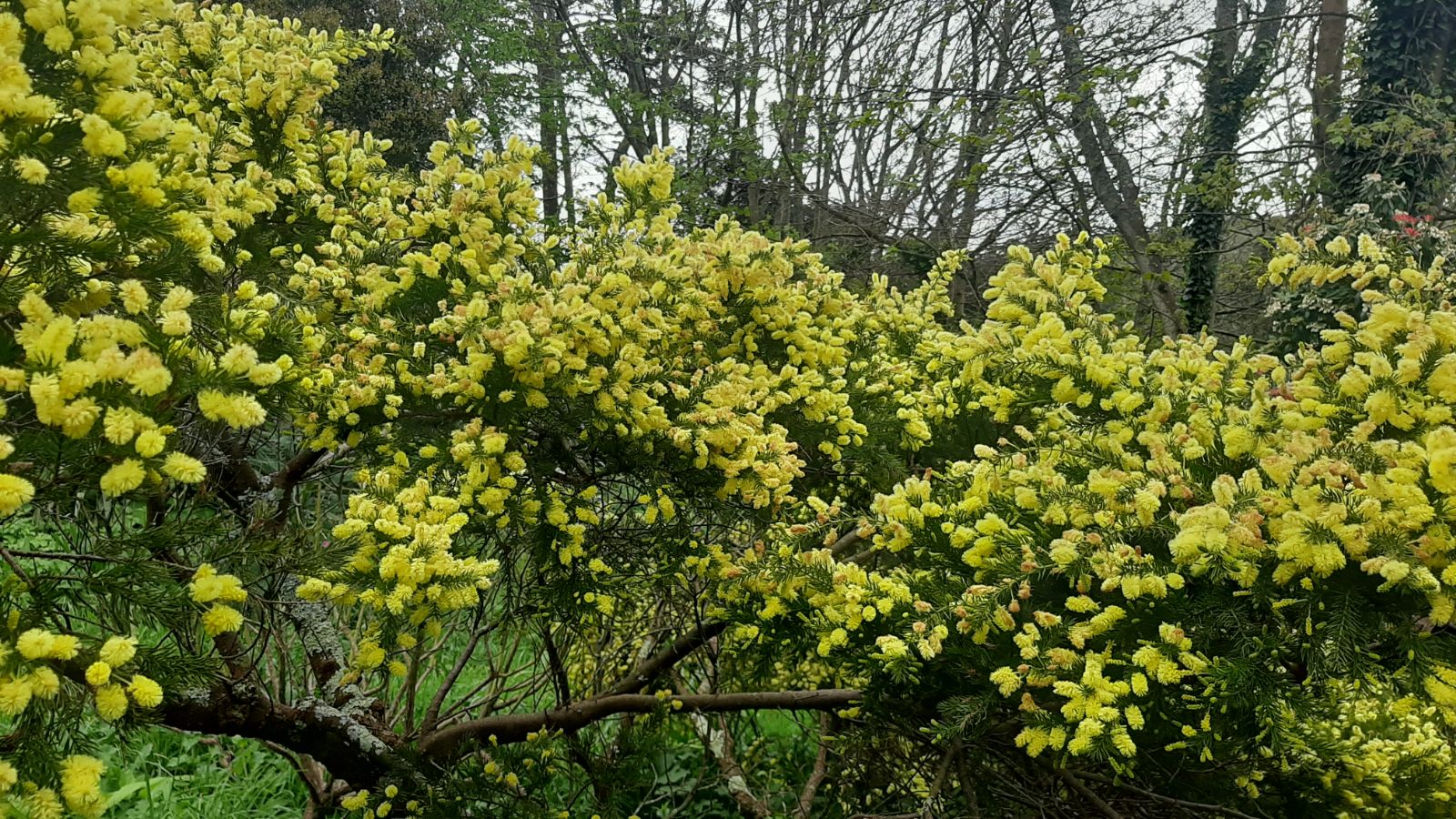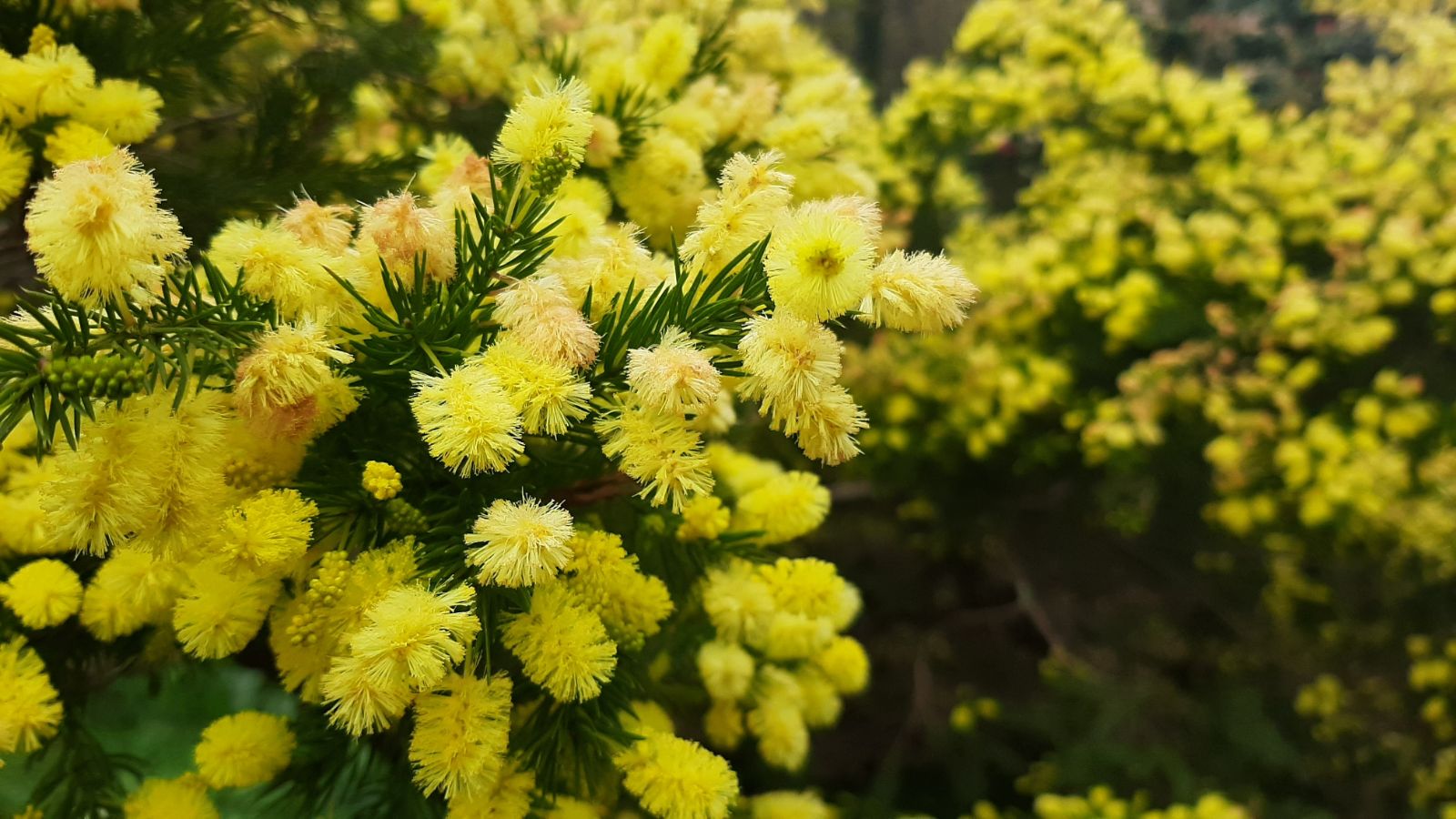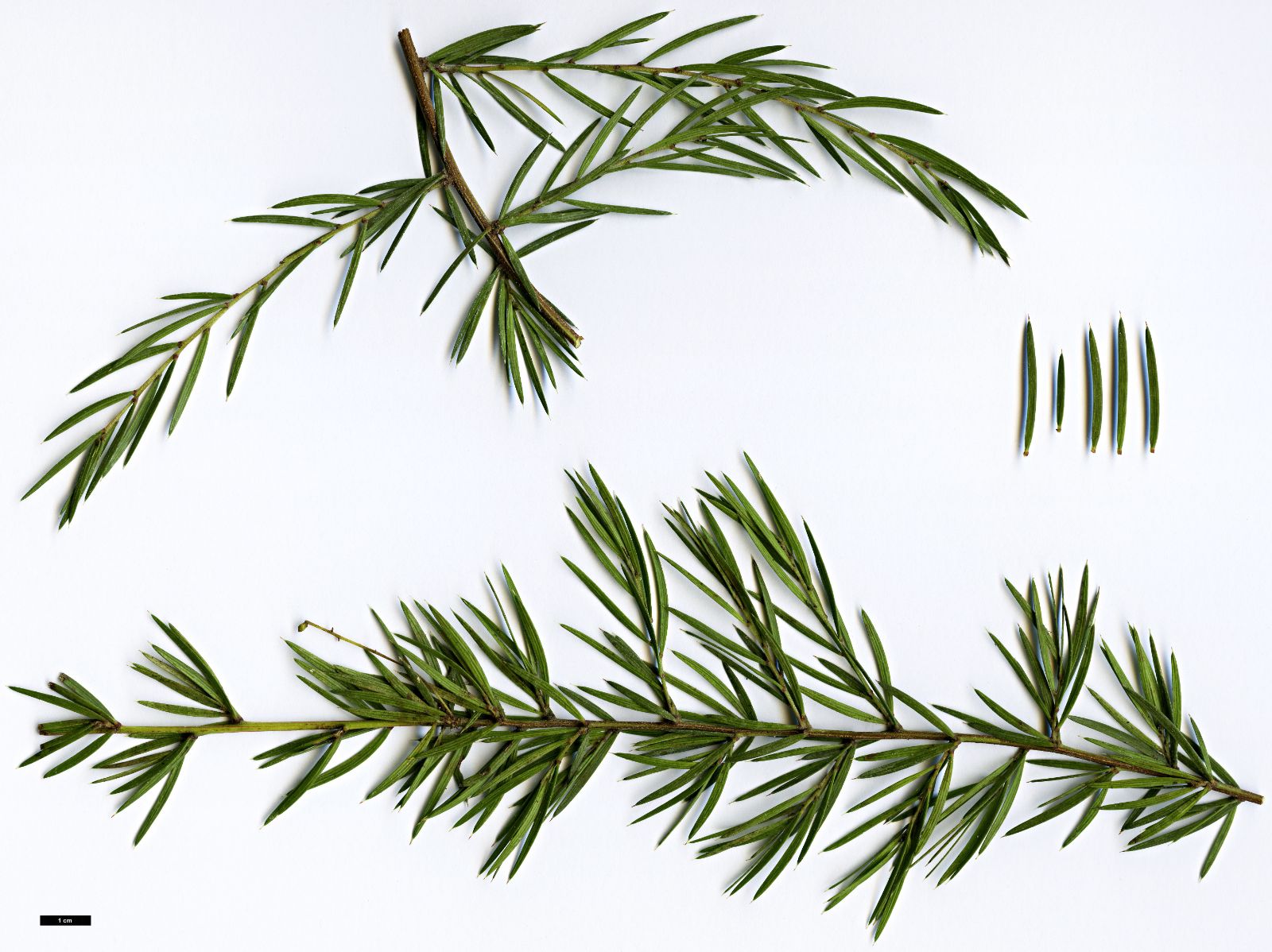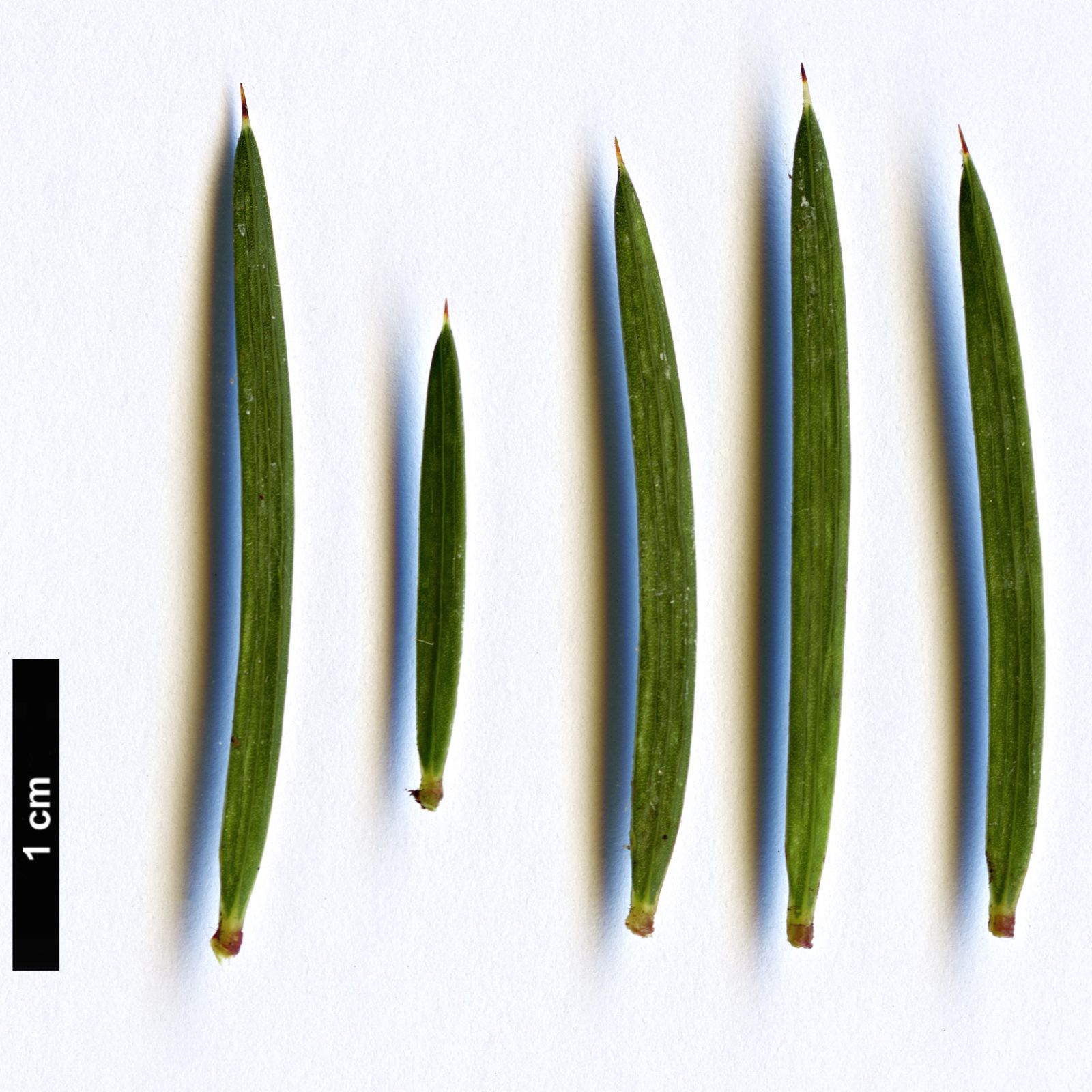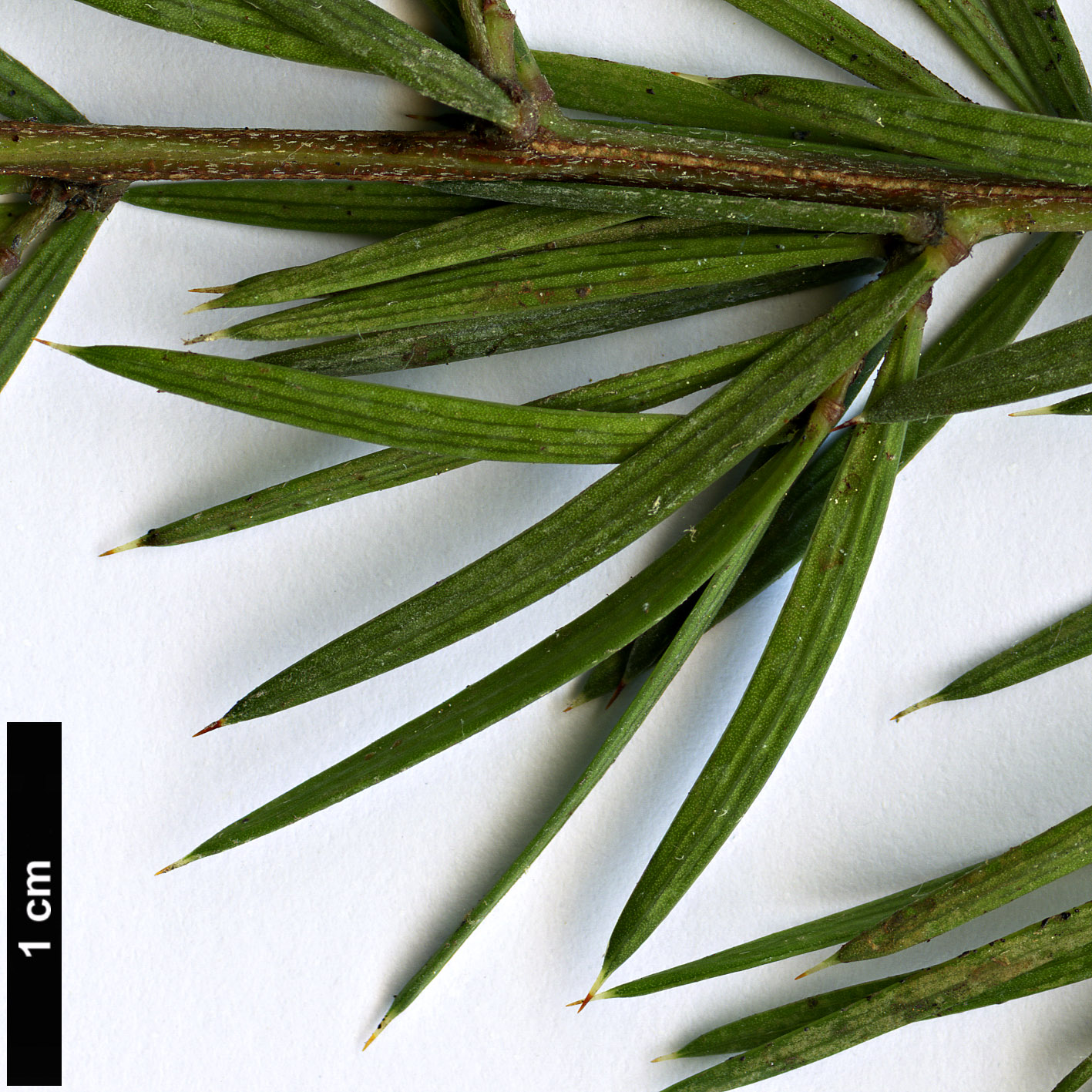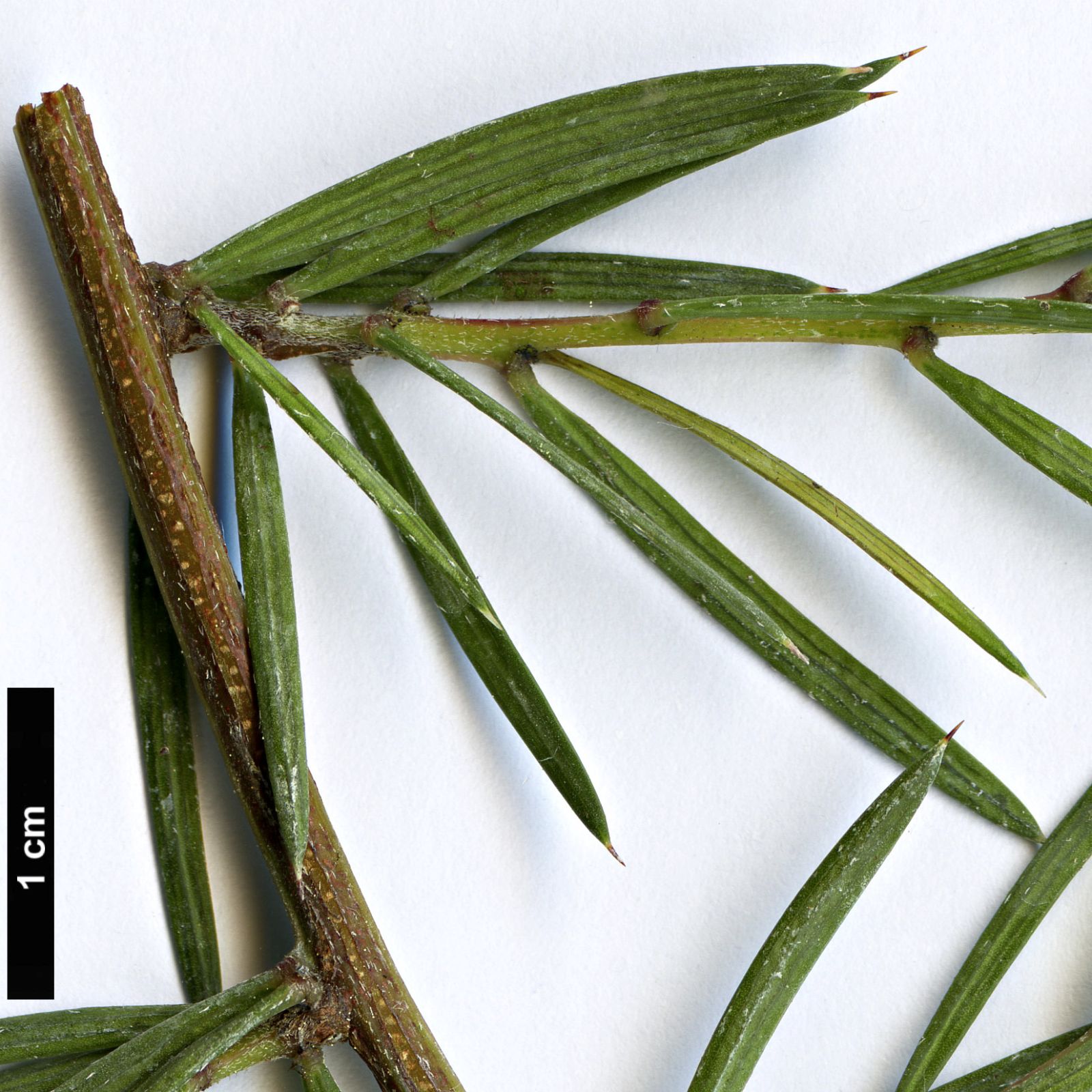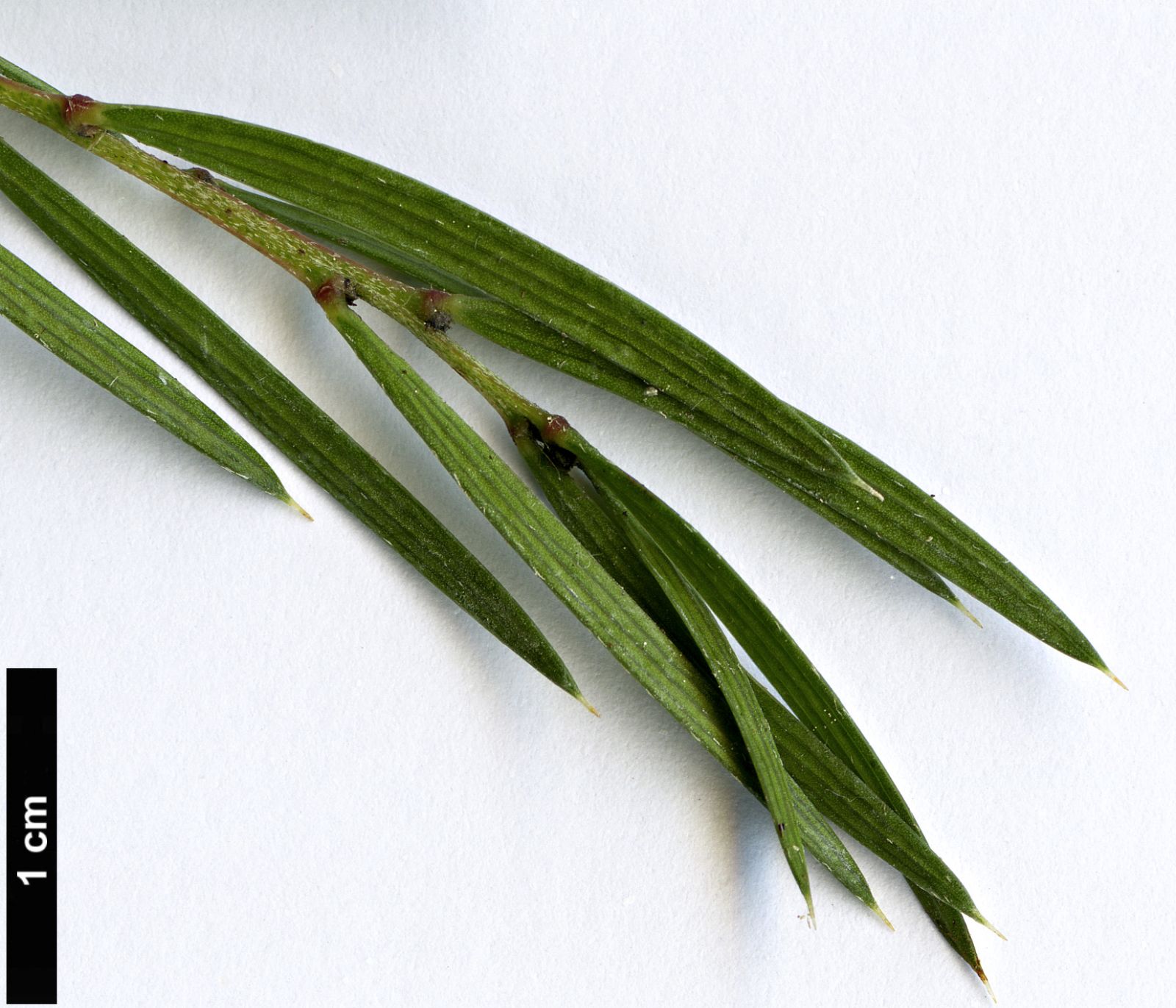Acacia riceana
Credits
Article from Bean's Trees and Shrubs Hardy in the British Isles
Recommended citation
'Acacia riceana' from the website Trees and Shrubs Online (treesandshrubsonline.
Genus
Common Names
- Rice's Wattle
A very graceful evergreen small tree up to 30 ft high, with abundant slender, pendulous, angular, glabrous young shoots. Phyllodes solitary or two to four at each joint, linear or awl-shaped, spine-tipped; 1 to 2 in. long, 1⁄12 to 1⁄8 in. wide; dark green, often more or less curved. Flower-spikes very slender, axillary, arched or drooping, 1 to 2 in. long, bearing the flowers in small clusters 1⁄6 in. wide and about 1⁄4 in. apart, pale clear yellow. Pod 2 to 3 in. long, 1⁄8 in. wide, downy. Bot. Mag., t. 5835.
Native of the southern part of Tasmania and described by Sir Joseph Hooker as by far the most beautiful acacia of that island, where it grows on the banks of streams and resembles weeping willow. It was named in honour of Mr T. Spring-Rice, Chancellor of the Exchequer, 1835–9. Near London and farther north, where it has to be given winter protection, it is very attractive as a spring-flowering shrub for cool greenhouses, its slender habit adapting it for clothing pillars or training on the roof. Charles Williams grew it out-of-doors at Green-ways, S. Devon, and it reached 20 to 30 ft in Cornish gardens such as Penjerrick, Carclew, and Bosahan.
Of the species with similar foliage treated here, A. diffusa and juniperina are distinguished by their spherical flower-heads and A. verticillata by the peculiar arrangement of its phyllodes.
From the Supplement (Vol. V)
Mr Ivor Barton has reported that this acacia has survived 25° F. of frost in his exposed garden in east Devon (The Garden (Journ. R.H.S.), Vol. 102 (1977), p. 169).

